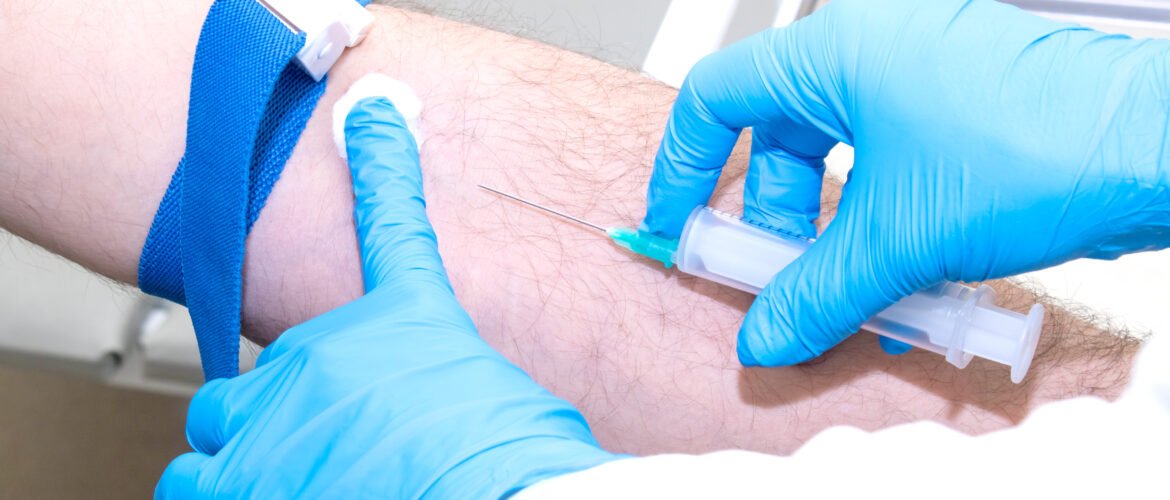- 020 3995 6399
- info@mediqueskills.co.uk
Blogs
Process of Cannulation – Phlebotomy Training
- October 6, 2023
- Posted by: Admin
No Comments


Process of Cannulation – Phlebotomy Training
Cannulation, also Intravenous Cannulation(IV) is a common technique of inserting a cannula in the veins of the body to provide venous access. The venous access allows for blood sampling, along with administration of the fluids, medications, chemotherapy,parenteral nutrition and blood products.
The person who carries out canulation process is called Phlebotomist. You need to undergo a Phlebotomy training course if you want to become a certified Phlebotomist.
Phlebotomy training course aims at training the applicants how to draw the blood from a patient to be used for medical or clinical testing, donations, transfusions or research purposes.
Phlebotomy training program also covers the topics on how to properly identify the patient, drawing blood into the correct tubes with the proper additives and many more.
Overview of Cannula
A cannula is a tube which is used for this purpose. In simpler terms, a cannula can surround the outer and the inner surfaces of a trocar needle. This results in the extension of the effective needle length by atleast half the length of the original needle. It is also known as intravenous cannula(IV). It comes in various sizes ranging from 14 to 24 gauge. Also there are various color codes provided for different-sized cannula.
The process of cannulation is carried out by certified Phlebotomist who has undergone a successful Phlebotomy Training course.
Cannula generally comes with a trocar inside. Trocar is a needle which punctures the body to get into the intended space. There are various types of cannula needles which exists. Intravenous Cannula is the most commonly used in hospital and medical centres. In cardiac surgery, varieties of cannula are used to set up cardiopulmonary bypass. Nasal cannula is used for respiration and is a piece of plastic tubing that runs under the nose used to administer oxygen.
Uses and Applications of Cannula
The cannula is widely used in hospitals and in medicinal purposes. Some of the uses and applications are listed below:
Intravenous Cannulation
A venous cannula is inserted into a vein which is primarily used for the administration of intravenous fluids for collecting blood samples. Arterial cannula is inserted into artery, commonly the radial artery, during major operations and in critical situations to measure beat-to-beat blood pressure. use of venous cannula is a painful procedure which can lead to stress and anxiety. Use of vapocoolant immediately before the cannulation can reduce the pain during the procedure.
Nasal Cannulation
A cannula used in nasal passage consists of flexible tube having multiple short, open-ended branches for comfortable insertion into nostrils and mouthand also for the delivery of gas or to measure the airflow into and out of the nose and/or mouth.
Tracheotomy Tube
The removal of a tracheotomy tube is referred as a decannulation.
Veterinary Use
Cannula is used in an emergency procedure to relieve the pressure and bloating in cattle and sheep suffering with ruminal tympany. Much larger cannulas are used for research of the digestive system of cows.
Aesthetic Medicine and Anti-Ageing
For aesthetic purposes, a blunt-tip cannula or microcannula (also called smooth tip micro cannula, blunt- tipped cannula) is a small tube with a blunt edge is used.
Non-Medical Uses
Apart from medicinal uses, in biological research a push-pull cannula is used which injects and withdraws fluid which can be used to determine the effect of certain chemical on specific cell.
So listed above were various medical as well as non-medical applications of Cullina. It is therefore necessary for individual to undergo a Phlebotomy training program in order to carry out the cullination process for medical uses.


